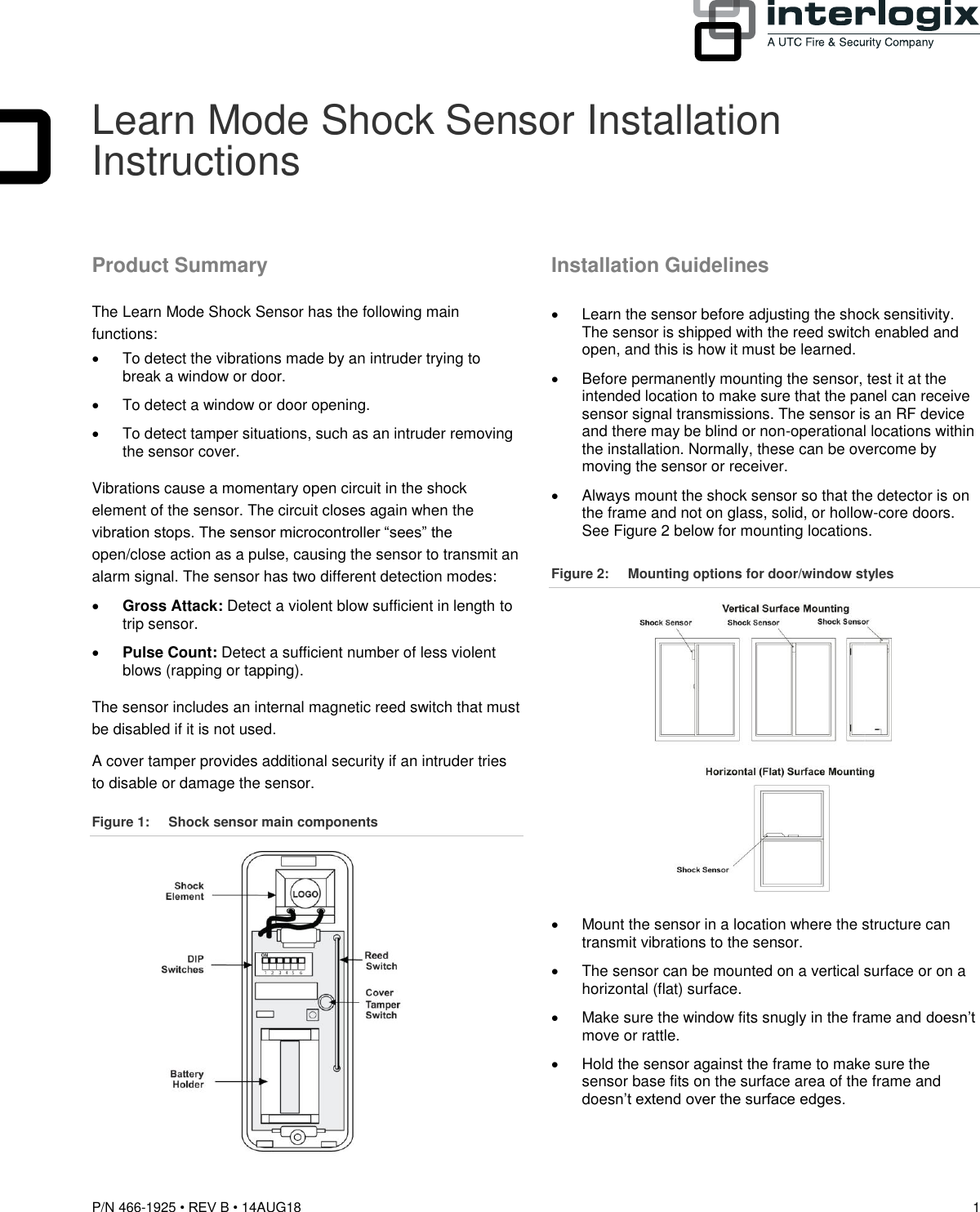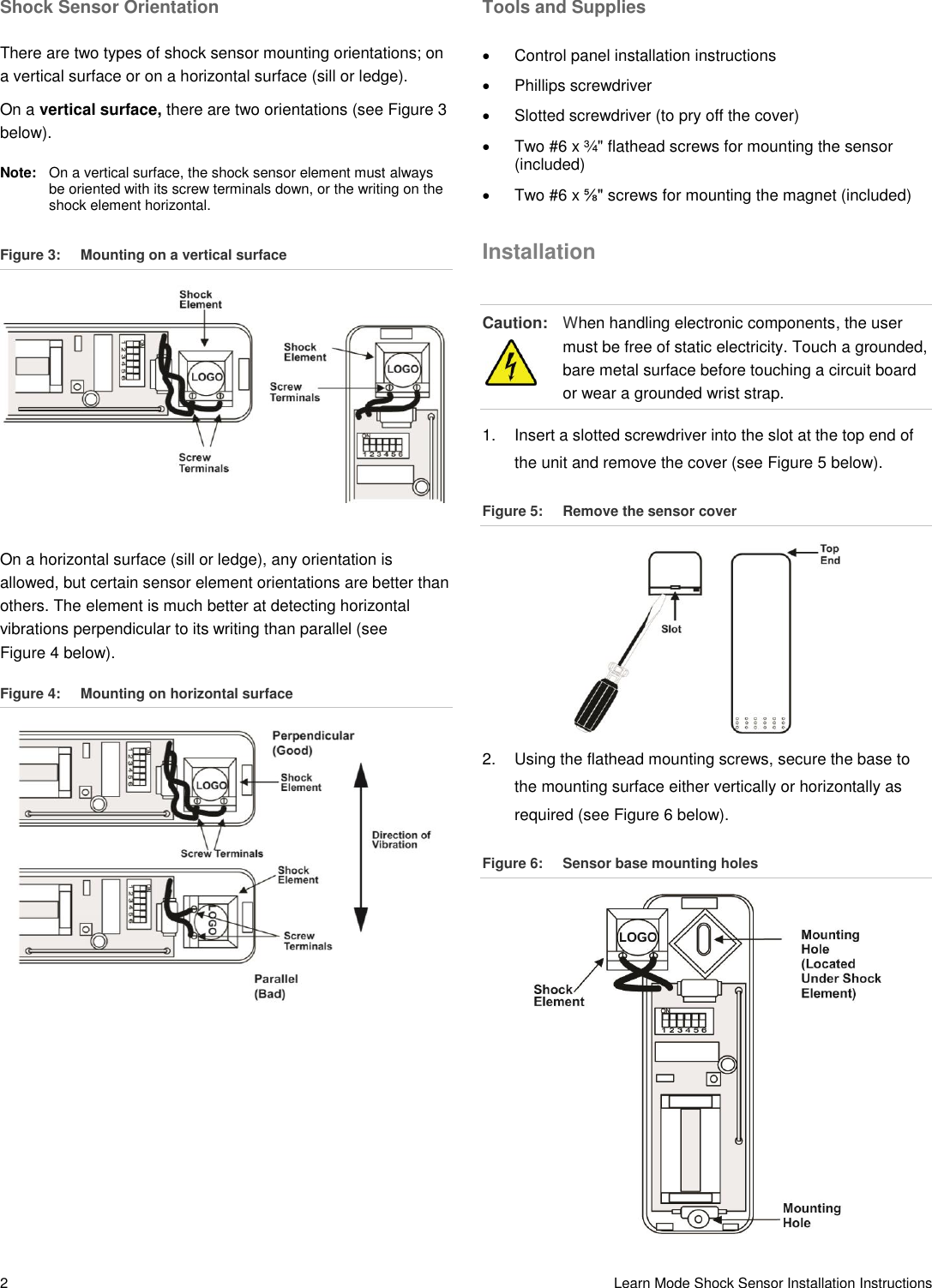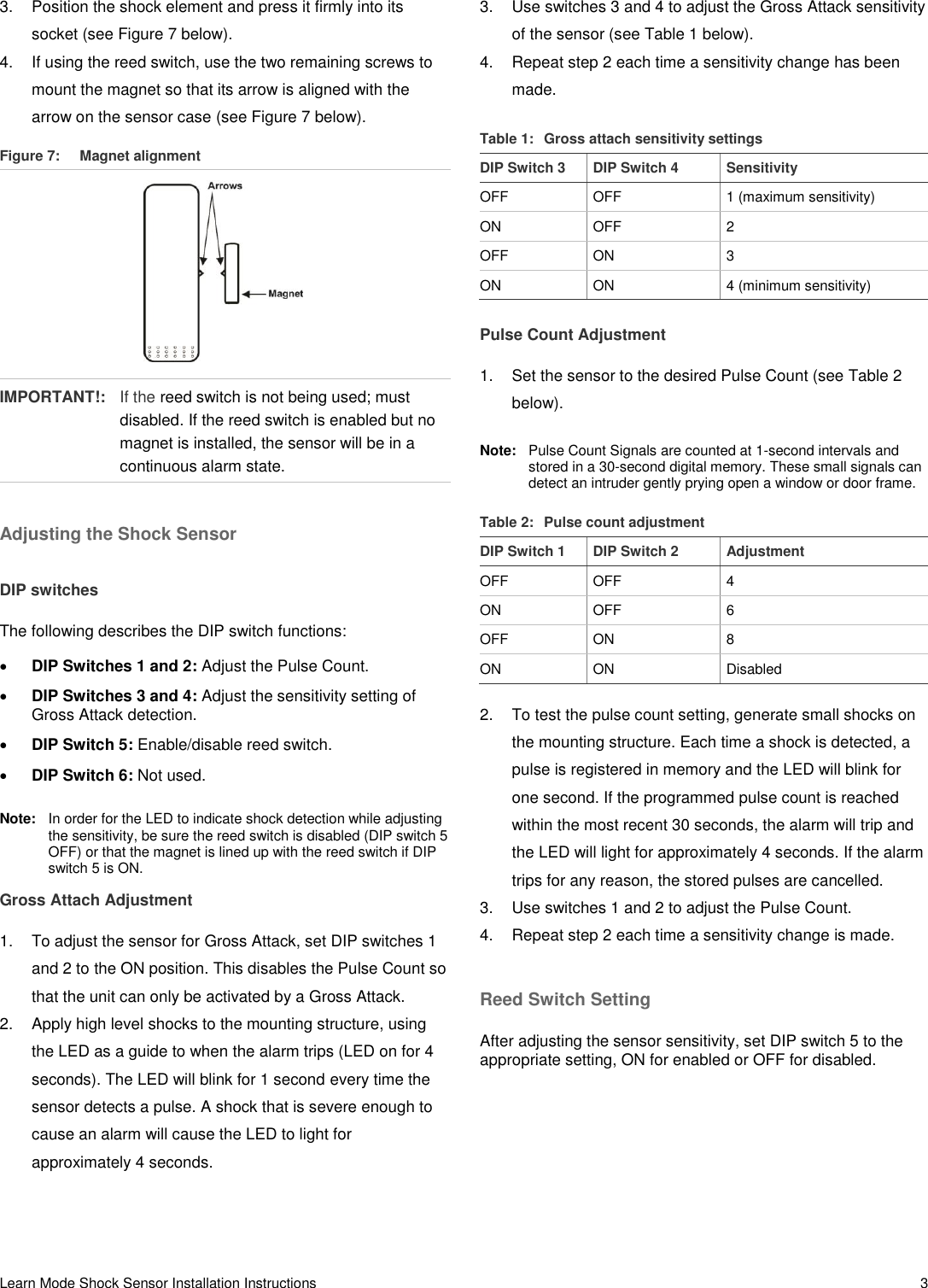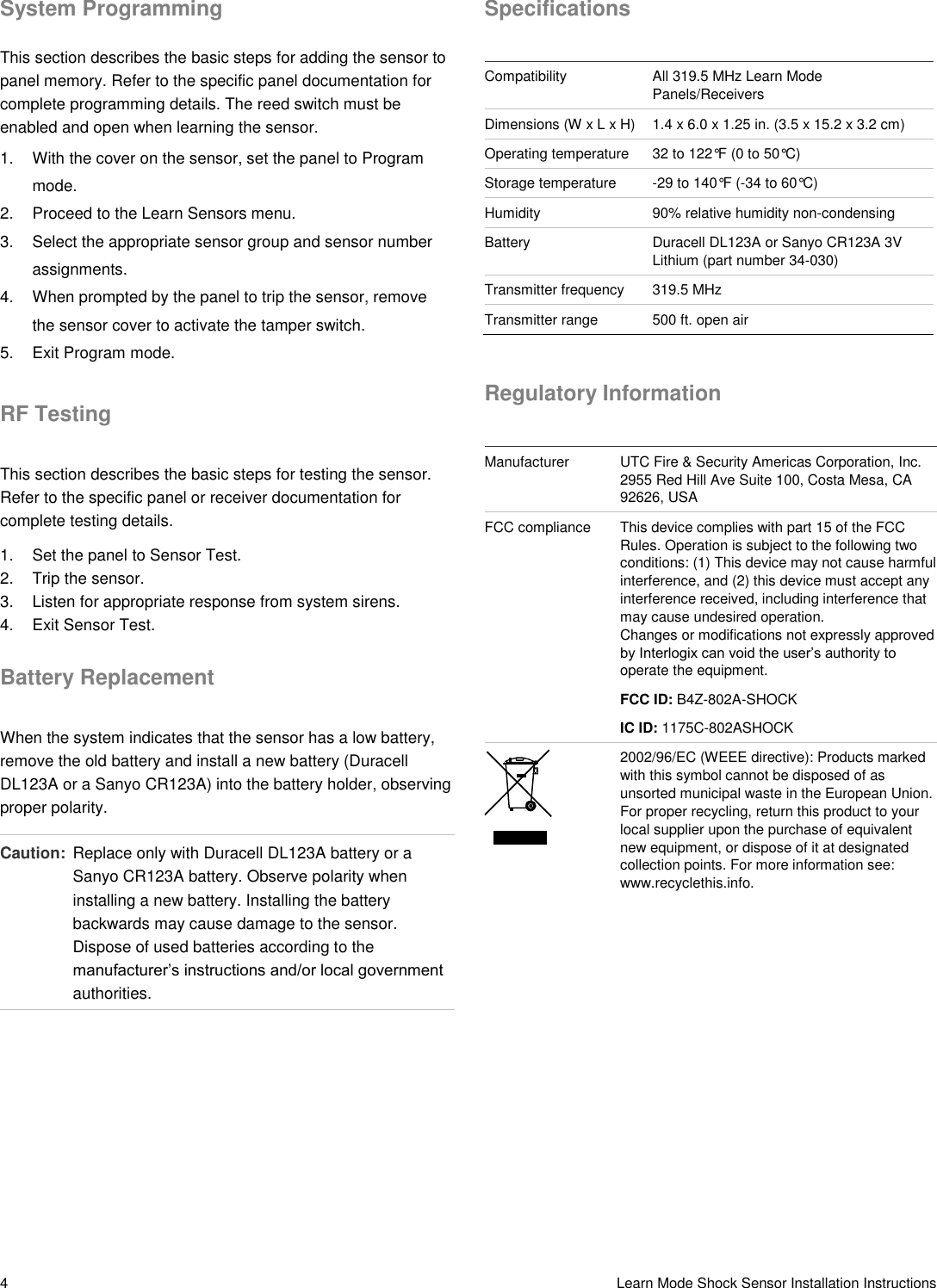UTC Fire and Security Americas 802A-SHOCK Shock Sensor User Manual Learn Mode Shock Sensor Installation Instructions
UTC Fire & Security Americas Corporation, Inc. Shock Sensor Learn Mode Shock Sensor Installation Instructions
Contents
- 1. User Manual
- 2. 466-1925-b-60-886-Shock-Sensor-Installs-14-8-2018
- 3. 466-1925-c-60-886-Shock-Sensor-Installs-29-10-2018
466-1925-b-60-886-Shock-Sensor-Installs-14-8-2018




